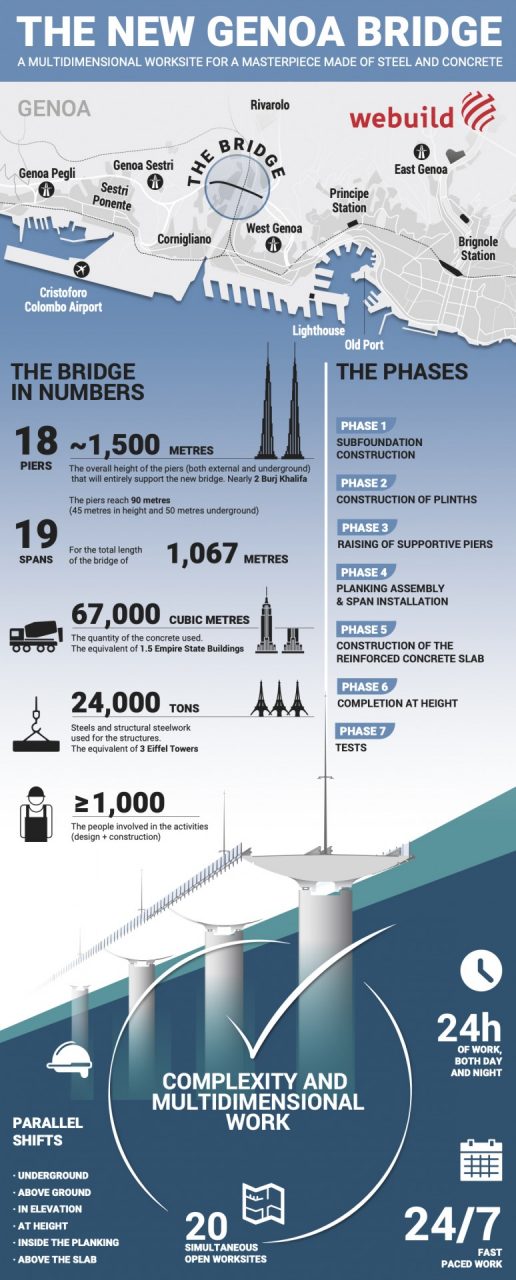One thousand people, and 330 companies (including contractors and sub-contractors) from all over Italy. Their group effort has resulted in an important achievement: from pouring the first batch of concrete to the wrapping up the finishing touches, they have completed Genoa’s new bridge in just over a year.
The new bridge could not have been delivered in such a short time without expert project management, led by the Webuild Group and Fincantieri, resembling an orchestra where each instrument plays in harmony with the others. Therefore, it seems fitting to mark this incredible feat with a concert for the Genoa bridge on 27 July.
The event will be held inside the construction site, and will feature a performance by the Accademia Nazionale Santa Cecilia orchestra conducted by Maestro Antonio Pappano. This event will be attended by local authorities, construction workers, engineers, and representatives of the 330 companies that make up the supply chain, contractors, and subcontractors. A time for celebration, but also for reflection.
“This concert will have the honor of celebrating this bridge, built by Webuild and Fincantieri, in record time, but at the same time to pay tribute to the people who lost their lives with the collapse of Morandi,” said Maestro Pappano. “It will be a very emotional event. In the name of art, and Beethoven.”
The notes of Beethoven’s Fifth Symphony will celebrate not only the bridge and work of all the people who have contributed to the construction, but also the local government’s commitment and the know-how of the Webuild Group and Fincantieri, which have collectively transformed the Genoa construction site into a national model for the future of Italian infrastructure. An important leap forward compared to the past. Let’s go back and look at the chain of events that lead to this last note.



